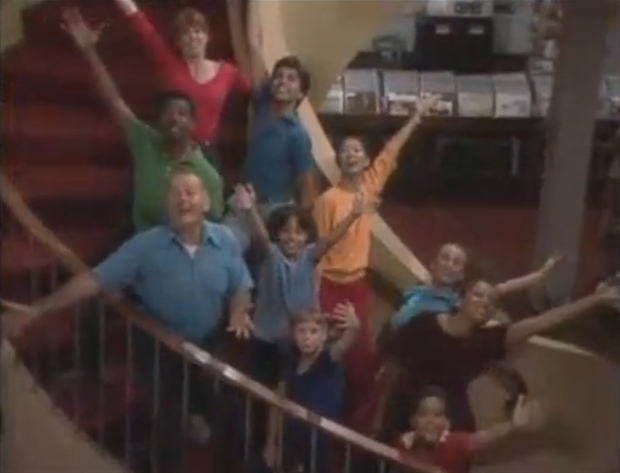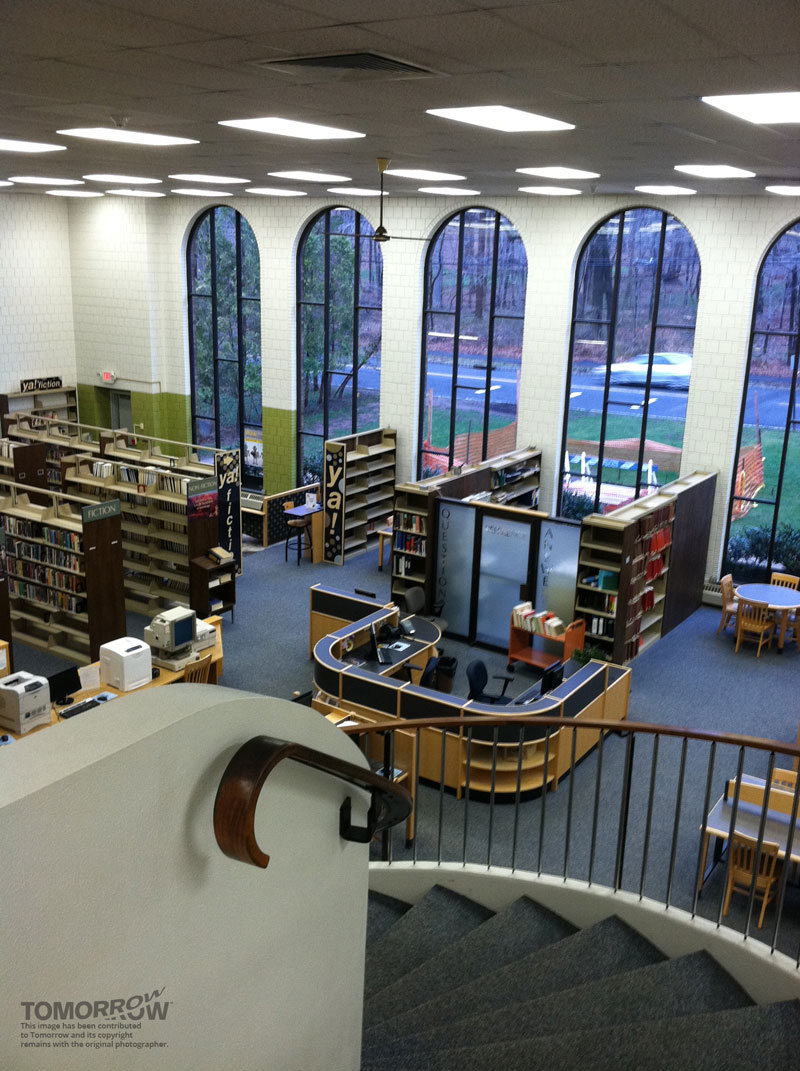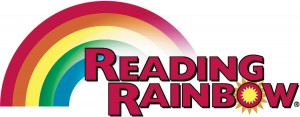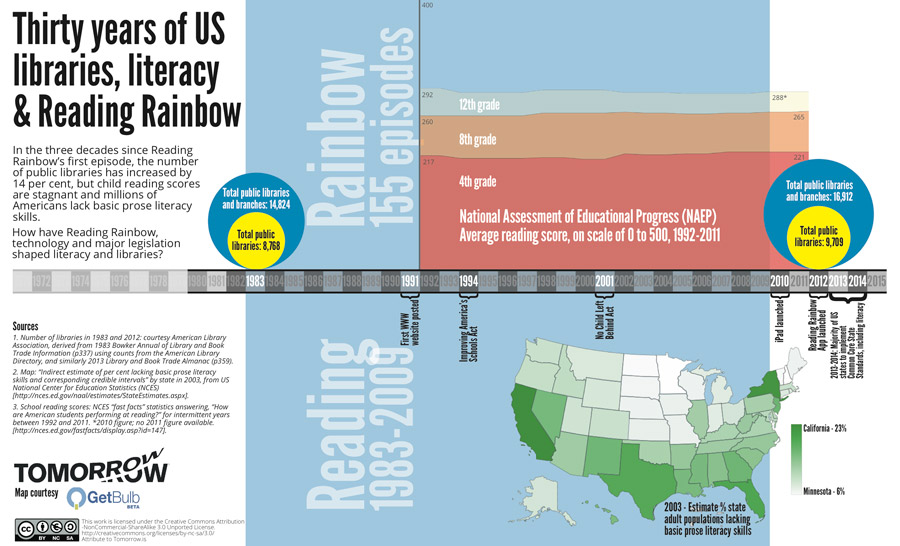The team behind the music video in the TV show’s first episode talk about the performance and literacy in America today
What do a Transylvanian toad, a ringmaster, a New Jersey library and America’s stagnant literacy rates have in common?
For 30 years, a children’s TV show – and its now tablet app descendant – have been trying to convey a joy of reading and the adventure to be found inside a book.
Reading Rainbow debuted on June 8, 19831 with the episode “Tight Times”, centred around the book of the same name by Barbara Shook Hazen2.
A young girl beset by boredom and a lack of money is introduced to the library by host LeVar Burton.
The resulting musical number shows staff and readers of all ages sitting on bookshelves and transforming into magical characters, darting in and out of the stacks, and running down the curving staircase shouting in praise of libraries in voices far louder than you’d ever hear in a library.
The song, “Check It Out”, brought together a Broadway choreographer, a young composer and actors at the start of careers that would later lead to top shows such as Treme and The Sopranos.
“Little did we know,” Mr Burton told Tomorrow, “that that little music video would be a part of the new way of story telling on TV in terms of matching imagery with narrative, either sung or, in the case of Reading Rainbow, spoken.
“We were just looking for ways to flesh out that idea that in tight times there are things that one can do to enhance one’s opportunities in life, and the library – at least in 1983 – was chief amongst those assets.”
Thirty years on from that music video in the first Reading Rainbow episode, Tomorrow tracks down those who made it happen and what it meant to them, and to reading. And we ask why child literacy rates remain stagnant, even as the number of libraries has risen.
“Check It Out” from Reading Rainbow from MARC ARAMIAN on Vimeo.
The Choreographer
Sammy Dallas Bayes3 was in high demand after the film adaptation of the musical Godspell and his Broadway revival of Fiddler On The Roof. Nominated for a 1969 Tony Award for best choreographer for Canterbury Tales, Mr Bayes was doing corporate work when he was asked to put together a song and dance number for the new PBS show, Reading Rainbow.
“It was basically a walk in the park,” he recalls in a call from his home in New York State. “It all sort of fell into place, and kept very simple and child-like, telling the story, and how you best get young kids interested in the library.
“They loved to go to the movies and see comics so my thought was what we do is set it up in a working library and transform it into fantasy. Everybody who was in the actual library, whether they worked there, whether they were reading books or checking out books, really became part of the fabric for the young girl.”
Shot in Millburn Free Public Library in New Jersey4, Mr Bayes said the location was ideal for turning a functioning library into a fantasy world.
“The book stacks had been there for years and were pretty large and I guess bolted to the floor,” he said. “All we had to do was get a high crane shot to just get above it. We looked at locations and that was one of our concerns: how easy would it be to shoot in the space we had?
“Having that area above the book stacks really made the decision for us because it completely opened up where I could put the camera, without being close to the ceiling. So it was a blessing more than anything else. It just gave it a different look.”
A year after “Check It Out”, Mr Bayes appeared himself in another Reading Rainbow episode, centred around the choreographing of a musical number “Teamwork”. He remembers both his daughters seeing the episodes in school and when he watched it again after being contacted by Tomorrow, he said it still works.
“It seems to be the kind of subject matter and vision that teachers in grade school can turn to as guidance, by using ‘Check It Out’ or ‘Teamwork’,” said the 74-year-old. “Imagination was brought out by what you could find in the library, by reading a book.
“I had not looked at the piece in such a long time and I thought, ‘oh, what a nice idea that was’. It’s simplistic, it’s something a young mind can follow, and you can see the idea of what a library would do. I felt very good about it. I enjoyed doing both of those pieces. It was a very good experience for me.”
The Composer
Mr Bayes asked a then young composer, Marc Aramian5, to put together the music to achieve the library vision. Mr Aramian admitted he was surprised that his linguistic experiments worked.
But when he recently showed the video of “Check it Out” to his daughter, she said, “That’s the goofiest thing I’ve ever seen”, he recounts.
“There’s a mixture of pride and embarrassment when you see some of your early work,” he said. “Watching it brought back this flood of memories.
“It was a real labour of love. I regularly contribute to causes and I was proud to be considered for something like that. I was the novice in the whole crew and it was very kind of them to think that I could handle it. And I think they were pleased with it. It was the first TV show that I ever did and my first Broadway-type thing.”
Speaking via Skype from his home in Los Angeles, Mr Aramian said: “My mandate was to create a track that would help tell the story about what was great about the library. So I wrote the lyrics and the music for this tune and did a demo and passed it around – everyone liked it.
“I really went out on a ledge I think because I was doing some wild things lyrically, talking about ‘open up your eyeballs wide’ and the bridge section about the ‘Transylvanian toad’ and the ‘equatorial road’ and all those kinds of things were just sort of flights of fancy that I never thought they’d like. But they liked them. I was really pleased about that.”
Mr Aramian said that LeVar Burton’s vocal part had to be him, while the other characters could be recorded from local singers. The actor, who went on to host Reading Rainbow until 2006 and continues to guide the parent company RRKidz6, flew to Atlanta where Mr Aramian collected him from the airport, took him to dinner and then to the recording studio the next day.
“Some of things were a bit out of his range so he talks some of it – you know, the Rex Harrison method of singing,” he said. “But he did it with such enthusiasm.
“Back in those days you didn’t have digital playback so you had to have a special playback rig that remained in sync while everybody lip-synced to the action and so there were technical hurdles that had to be handled.”
Mr Aramian had a number of jobs before turning to composing. After a degree in industrial and systems engineering from Georgia Tech, he started a plastics manufacturing company with his family, ran the IT department in an insurance company, then bought out a partner at a customer furniture firm. He got involved in amateur opera and a retired composer-conductor taught Mr Aramian to read music. But his first attempt at composing wasn’t profitable and he went to work in the construction industry in Saudi Arabia before returning to the US to try music again.
After two years of pounding the pavement before getting his first job, it was while doing the corporate work with Mr Bayes that the “huge draw” of PBS arrived.
“Sammy had some notoriety and he was kind enough to include me in this thing,” he said. “I was carving out a career in Atlanta at that time and I wasn’t a huge fan of Broadway. My background was more in pop, with a pinch of R&B and I wanted to bring that sensibility to the track rather than the Broadway style that was popular at the time. I was really just starting out in my career.”
Mr Aramian has continued composing full time since the Reading Rainbow gig, including the Flag Ceremony at the 1992 Barcelona Olympics, feature films, records and more than 90 TV documentaries.
The performers
Marc Aramian was not the only one at the start of his career during “Check It Out”. The young girl battling boredom, played by Cassandra Murray, did an early Cosby Show episode. Donna Smythe, who played the flame-haired librarian in the number, would later appear in the role of Gia Gaeta in The Sopranos. She passed away in September 20127.
Venida Evans8 flew down the stairs as the “Fairy Queen of Books” at the start of three decades of work, including Mrs Brooks in HBO’s Treme and the award-winning film Transamerica. She also made a $8000-winning appearance on Who Wants To Be A Millionaire? and was “The Muse” – or “the Ikea lady” in the Swedish firm’s ad campaign starting in 2008. Ms Evans was not available for interview for this piece.
Dick Seltzer Snr played “the ringmaster” in “Check It Out”, marking the start of his second career after a long contribution to education.
Mr Seltzer, now 90, had a stroke in 2009 and is unable to speak, but his children said he always remembered the role fondly. After serving in World War II, he had gone from teacher to superintendent of schools in Rockville and Baltimore, Maryland, Plymouth, New Hampshire, and the suburbs of Philadelphia where he was superintendent in Bristol Township, Huntingdon Valley, and Columbia. He was also dean of Plymouth State College in New Hampshire during his career.
When he retired at 55, he decided to go into acting, something he continued until he was 85.
Richard Seltzer Snr
Images of Richard Seltzer Snr in assorted acting and performance roles, courtesy the Seltzer family.
“Dad was always involved in education, so it was a perfect role for him.”
Daughter Raven Sadhaka Seltzer, an author and reiki master10, added: “I was actually just going through my father’s acting portfolio the other night and he had some still shots in there from this ‘Reading Rainbow’ segment. The make-up they created for his ringmaster character was quite amazing.
“I think I was in college when this was produced. I know that my dad really enjoyed being part of the production and I’m sure it was appealing that it was for PBS. Our father was an educator by profession and was always interested in ways to help people learn and devoted most of his professional life to that end.”
LeVar Burton laughs when he recounts the styles of 1983.
“There’s certainly a dated aspect – outfits, hairstyle, you name it,” he said by phone from California. “However, at its core, as innocent and guileless as it was, it was an attempt to really connect with kids around the idea that the library is a great place to check out.
“It has become for a generation one of those seminal pieces of media, like the ‘Teamwork’ video. People remember those Reading Rainbow dance numbers, as corny as they were. People remember them and they had impact over time. It was an honest attempt to connect to audiences.”
The Library
Milburn Free Public Library, where “Check It Out” was filmed, was stripped of identifying marks to give it more of an “any library” look.
Children’s librarian Patt Kent, who worked at the 25,000+ square feet, 1976 building at the time of the Reading Rainbow visit, said it had a positive impact on reading and the library.
She said: “People recognised our library from the show and came to see it in person. Also, town residents joined the library in increased numbers.
“We purchased all the books that were featured on the program, so we had increased circulation. I think the program in general helped make reading into a much more fun activity. It wasn’t just for nerdy kids.
“Also, meeting LeVar Burton and talking to him about the importance of libraries and reading in his life was inspiring to us all. The kids just loved that he loved reading, and so they loved it too. It was a great experience for us all.”

Screen grab from the end of Check It Out in the Reading Rainbow episode “Tight Times”, filmed on the staircase of Milburn Free Public Library

Milburn Free Public Library, New Jersey, looking down the staircase used in “Check It Out”. Courtesy Michael D Banick, library director.
Since the start of Reading Rainbow, new technology has frequently been heralded as bringing the end of libraries and the print book, but neither has happened. According to the American Library Association (ALA)11, the number of public libraries has actually increased by 14 per cent since 1983, but so too has the reach of those libraries, with 10 per cent more branches in communities. Those figures don’t include school, college, university or other libraries.
But literacy scores are still struggling. Figures from the National Assessment of Educational Progress (NAEP) show measures for youngsters in grades four, eight and 12 to be virtually flat between 1992 and 201112. And 2003 estimates calculated that tens of millions of adult Americans lacked basic prose literacy skills.
Download pdf of infographic here.
“It’s not only the number of libraries increasing,” said ALA president Barbara Stripling, “but the types of programming and the public outreach of libraries has really skyrocketed. What we’re finding is the use of libraries, even in a recession, has gone way up.
“Libraries are no longer focused just on resources and certainly no longer focused just on print material, and I think that willingness to think about libraries as places of conversation and learning and exchange of ideas and access to electronic information and e-books and places where families can come.”
Ms Stripling said with local capital investment, more libraries are becoming community centres, offering virtual programmes and attracting new patrons such as business people who might not have considered them before.
“Yes, we have all of this information, but it’s really too much to handle,” she said. “And it is not necessarily reliable information, it’s not easy to navigate, and our kids and adults need the skills to make sense of all of this, to find the good information, to evaluate it and then use it for whatever they are trying to do.
“Part of what we are trying to do is to change the definition of literacy, beyond basic decoding-type skills to literacy as an empowerment, that not only can you decode it but you understand it and then you can use that to draw your own conclusions or create your own ideas, your own product.
“We are trying our hardest. I find the NAEP scores to be very disappointing and there are certainly huge pockets of people throughout the US who are not at the level we want them to be. I believe part of that is that I think we try too hard to teach them to read rather than encouraging them to read on their own and become independent readers, which has a huge impact on the literacy rate. It is a struggle and every librarian of every type and every educator is focused on it.”
Sammy Dallas Bayes said the current “overdosing” on electronics is limiting people, but that children and adults will find balance again.
“I think we’re going through a phase with the electronics,” he explained, “where we’re becoming a short sentence, short paragraph, short story kind of living, not the full gamut of what we are capable of doing. I do feel there are a lot of times where the young are missing out with too many video games – not that there’s anything wrong with that, but you can overdose on anything.
“There are times now where we’re overdosing on that and that’s taking away from literature and the gaining of any knowledge through literature. How much, I don’t know.
“I think there are good things that happen but I think there’s a lot being lost at the same time by lessening our connection with literature and with reading. I think we’re losing a lot because right now we are overdosing on the electronic world – it’s a really exciting thing that we’re all jumping on, especially the young.
“Somewhere down the road, the new approach and the old approach will even itself out.”
Marc Aramian said the state of literacy was “so sad” and that as many schools were struggling as were finding success.
“I think there’s an establishment in education which is trying to prevent change and there are many brave people who are trying to do what they can to make a change,” he said.
“There are so many entrenched interests in education that it’s difficult for a sea change to occur. And really it should be a return to traditional learning, but that has been lost in the name of loftier goals. I thought Reading Rainbow was terrific. It brought the excitement of reading to an audience that was stuck in front of TV.
“And while I make my living in the entertainment business, I think there’s been some grave disservice done to cultures around the world by distracting people from more important things, like learning. I think the human mind is going to gravitate to funner things, and when we have so many distractions, it makes it very difficult for parents and teachers to get kids to learn.
“I cheer the people who are trying to improve literacy.”
In 2011, LeVar Burton took on the Reading Rainbow licence and with business partners launched an iPad app in June 2012, becoming the top downloaded app within 36 hours13.
“Libraries continue to be a critical part of the infrastructure of universal access for all Americans, when talking about this digital divide,” said Mr Burton. “Libraries have managed to remain relevant in this conversion from the world of print to digital literature and I believe going forward we will continue to rely on them even more, as a source, a marketplace for content of all kinds, as well as a place we can guarantee universal access for all American citizens.
“We are beginning to expand our idea of the nature of literacy, not just the literacy of language and of reading, but we need cultural literacy, we need emotional literacy – these are all of the skills that one is required to have in order to be a successful human being in today’s world.
“We are faced with a challenge now of having to develop a balanced approach to how we consume everything, especially our information and our educational content. The choices are myriad and the opportunities to distract ourselves into oblivion are numerous.
“A steady diet of Grand Theft Auto is not going to get it done. If you do nothing but play Halo for 16 hours a day, you’re not going to be equipped with the challenges of living in the real world. We have to develop discernment in the face of a myriad of choices.”
Reading Rainbow has been so important in so many people’s lives, said ALA’s Barbara Stripling, lifting reading from the page to real people and real interactions.
“Sesame Street, Reading Rainbow – there have been a few that have been pivotal to people’s lives,” she said. “And there are lots of stories of people who learned to read by watching those shows, both in terms of motivation and also getting an understanding of how language works and why you would want to [read].”
Mr Burton said he will continue to champion literacy and reading.
“I’d like to think we made a difference,” he said. “I get the sort of feedback everyday in my life, on the street, that we made a difference, that we occupied a significant place in the lives of adults now, as they were growing up. We’re proud of that.”
Ms Stripling added: “Reading Rainbow has had a huge impact on libraries because it opens up the world of books, the world of discovery and takes kids into an interactive mode that they sometimes don’t get just from watching a regular television programme, so that they reach out and they are willing to be curious and to discover, and that certainly opens the door to reading and to checking books out of the library.”
- Did “Check It Out” entice you into the library? What did Reading Rainbow do for you? How can America improve its literacy scores?
* * *
“Check it out”
(Music and lyrics by Marc Aramian)
First you need a card,
your ticket to the stacks,
If you check a book out,
you gotta bring it back.
Look around, check it out,
if you need a hand,
I’ll show you all the tools you need
to help you understand.
Check it out, check it out, check it out.
Don’t shout.
Check it out, check it out, check it out.
Books, books everywhere, find a place to hide.
Settle down and open up your eye balls wide.
Wish for all you want,
go for all you wish,
This is where you serve yourself your very favourite dish.
Check it out, check it out, check it out
Don’t shout.
Check it out, check it out, check it out
Feast on fantasy take a look inside.
Meet the fairy queen then take her for a ride
in your old jalopy on the Equatorial road.
Watch out for the flying fish
and the Transylvanian toad.
Open up your eyes and see the world for free,
Sail the crystal skies and skate the frozen sea,
These are more than doors that will open up your mind,
Take a look inside,
it’s up to you to find.
Stick your head inside these phones, records can’t be beat.
Flip your jets on these cassettes
with rock ‘n’ rollin’ beats
Magazines and movies comin’ out the walls.
Short, tall, rich, poor,
for one and all.
Check it out, check it out, check it out
Check it out, check it out, check it out
It’s all for free!
At the library!
Check it out!
Come and see!
Check it out!
CORE PRINCIPLES APPLIED
No issues for principles 1, 2, 3, 4, 5, 6, 7, 8 or 9.
10. Educate and entertain: Though a TV show is firmly in the “entertain” side, this piece aims to also educate on the way the first programme was made, and the literacy issues that continue to be a matter of concern and debate in the US and elsewhere.
11. Promote responsible debate and mediation: The issue of reading and literacy is larger than any single article. We encourage any comments or questions that will add to the discussion and evolution of the subject.
- http://www.imdb.com/title/tt0683480/ ↩
- http://www.barbarashookhazen.com/ ↩
- A bio of Sammy Dallas Bayes. ↩
- http://www.millburn.lib.nj.us/ ↩
- http://www.aramian.com/ Mr Aramian declined to give his age. ↩
- http://www.rrkidz.com/ and http://readingrainbowblog.wordpress.com/ ↩
- http://www.legacy.com/obituaries/delawareonline/obituary.aspx?pid=160095295. An eBay auction of Ms Smythe’s headshots included a copy of her CV ↩
- http://www.imdb.com/name/nm0263287/ Venida Evans confirmed by email that she was the “Fairy Queen of Books” but was otherwise unavailable for interview. ↩
- http://www.samizdat.com/ ↩
- http://www.selfhealingsolutions.com/ ↩
- Number of libraries in 1983 and 2012: courtesy American Library Association, derived from 1983 Bowker Annual of Library and Book Trade Information (p337) using counts from the American Library Directory, and similarly 2013 Library and Book Trade Almanac (p359). ↩
- School reading scores: NCES “fast facts” statistics answering, “How are American students performing at reading?” for intermittent years, obtained from National Assessment of Educational Progress (NAEP). http://nces.ed.gov/fastfacts/display.asp?id=147. ↩
- http://www.rrkidz.com/sites/default/files/RR_App_International.pdf and http://readingrainbowblog.wordpress.com/2013/07/10/reading-rainbow-opens-up-possibilities-for-all-children/ ↩




